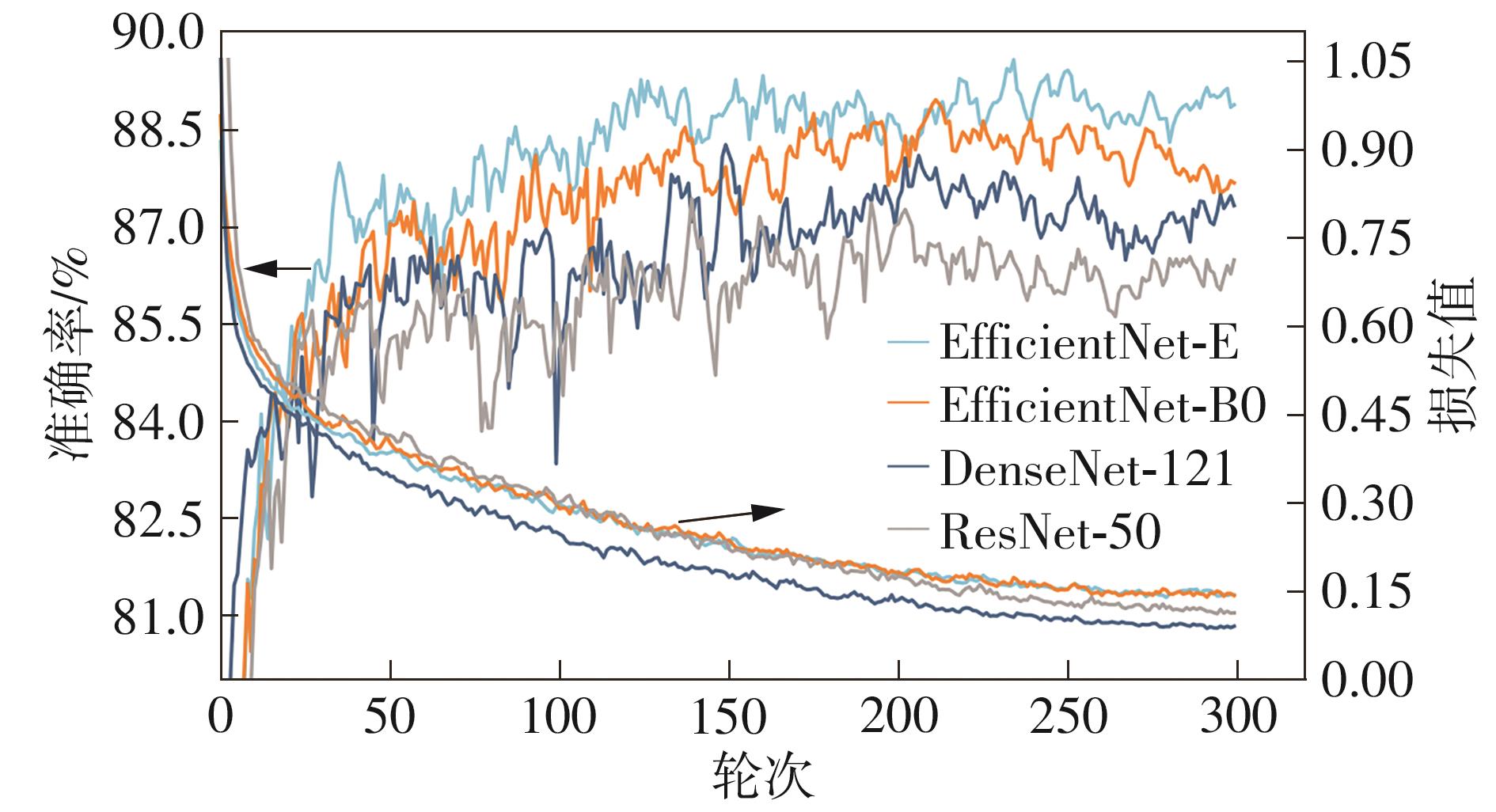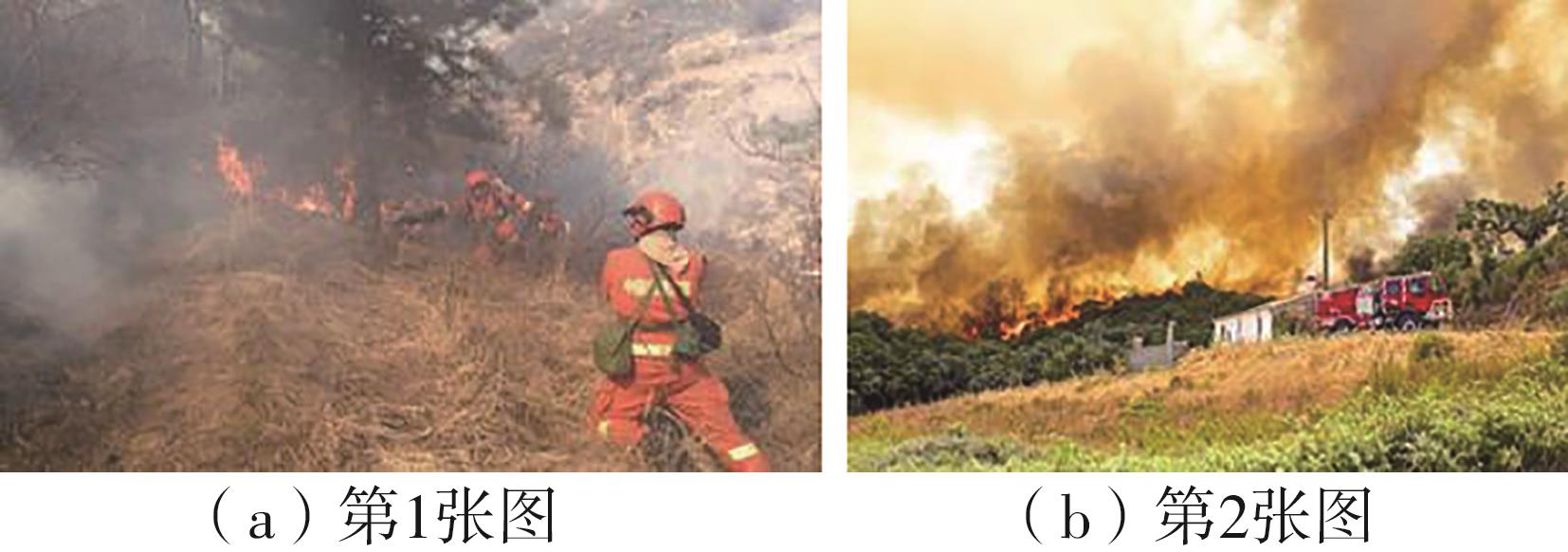Journal of South China University of Technology(Natural Science Edition) ›› 2024, Vol. 52 ›› Issue (2): 42-49.doi: 10.12141/j.issn.1000-565X.230046
• Computer Science & Technology • Previous Articles Next Articles
Forest Fire Recognition by Improved EfficientNet-E Model Based on ECA Attention Mechanism
ZHOU Lang FAN Kun QU Hua ZHANG Dingran
- School of Economics and Management,Beijing Forestry University,Beijing 100083,China
-
Received:2023-02-14Online:2024-02-25Published:2023-05-12 -
Contact:樊坤(1978-),女,教授,博士生导师,主要从事系统优化与仿真、智能算法、电子商务、MIS等研究。 E-mail:fankun@bjfu.edu.cn -
About author:周浪(1992-),男,博士生,主要从事人工智能、大数据、智能优化算法、系统优化等研究。E-mail:zhoulang@bjfu.edu.cn -
Supported by:the National Natural Science Foundation of China(71901027);the Humanities and Social Sciences Foundation of the Ministry of Education of China(21YJA630012)
CLC Number:
Cite this article
ZHOU Lang, FAN Kun, QU Hua, et al. Forest Fire Recognition by Improved EfficientNet-E Model Based on ECA Attention Mechanism[J]. Journal of South China University of Technology(Natural Science Edition), 2024, 52(2): 42-49.
share this article
| 1 | 赵鹏武,武峻毅,张恒 .基于聚类分析法的我国森林火险等级区划研究[J].林业工程学报,2021,6(3):142-148. |
| ZHAO Pengwu, WU Junyi, ZHANG Heng .Study on forest fire risk classification in China using cluster analysis[J].Journal of Forestry Engineering,2021,6(3):142-148. | |
| 2 | 祖鑫萍,李丹 .基于无人机图像和改进YOLOv3-SPP算法的森林火灾烟雾识别方法[J].林业工程学报,2022,7(5):142-149. |
| ZU Xinping, LI Dan .Research on forest fire smoke identification method based on UAV images and improved YOLOv3-SPP algorithm[J].Journal of Forestry Engineering,2022,7(5):142-149. | |
| 3 | 杜嘉欣,常青,刘鑫 .面向森林火灾烟雾识别的深度信念卷积网络[J].现代电子技术,2020,43(13):44-48. |
| DU Jiaxin, CHANG Qing, LIU Xin .DBN-CNN for forest fire smoke recognition[J].Modern Electronics Technique,2020,43(13):44-48. | |
| 4 | 李珍辉,鲁静文,陈镜伊,等 .基于InceptionV3卷积神经网络森林火灾检测方法[J].湖南工程学院学报(自然科学版),2021,31(4):44-49. |
| LI Zhen-hui, LU Jing-wen, CHEN Jing-yi,et al .Forest fire detection method based on inception V3 convolutional neural network[J].Journal of Hunan University of Engineering (Natural Science Edition),2021,31(4):44-49. | |
| 5 | 李梁,董旭彬,赵清华 .改进Mask R-CNN在航拍灾害检测的应用研究[J].计算机工程与应用,2019,55(21):167-176. |
| LI Liang, DONG Xubin, ZHAO Qinghua .Application research of improved Mask R-CNN in aerial disaster detection[J].Computer Engineering and Applications,2019,55(21):167-176. | |
| 6 | 周浪,樊坤,瞿华,等 .基于Sparse-DenseNet模型的森林火灾识别研究[J].北京林业大学学报,2020,42(10):36-44. |
| ZHOU Lang, FAN Kun, QU Hua,et al .Forest fire identification based on Sparse-DenseNet model[J].Journal of Beijing Forestry University,2020,42(10):36-44. | |
| 7 | 李巨虎,范睿先,陈志泊 .基于颜色和纹理特征的森林火灾图像识别[J].华南理工大学学报(自然科学版),2020,48(1):70-83. |
| LI Juhu, FAN Ruixian, CHEN Zhibo .Forest fire recognition based on color and texture features[J].Journal of South China University of Technology (Natural Science Edition),2020,48(1):70-83. | |
| 8 | 李惠鹏,李长勇,李贵宾,等 .基于深度学习的多品种鲜食葡萄采摘点定位[J].中国农机化学报,2022,43(12):155-161. |
| LI Huipeng, LI Changyong, LI Guibin,et al .Picking point positioning of multi-variety table grapes based on deep-learning[J].Journal of Chinese Agricultural Mechanization,2022,43(12):155-161. | |
| 9 | 吴天赐,郁佳鑫,黄晓峰,等 .深度学习图片分类模型ResNet-18用于判定口腔鳞状细胞癌浸润方式的初步研究[J].口腔医学研究,2023,39(10):917-922. |
| WU Tianci, YU Jiaxin, HUANG Xiaofeng,et al .Preliminary study on deep learning picture classification model for identification and classification of invasion pattern of oral squamous cell carcinoma[J].Journal of Stomatology,2023,39(10):917-922. | |
| 10 | 苏令涛,李瑞泽,张功磊,等 .基于深度学习的农作物病虫害识别研究[J].数学建模及其应用,2022,11(4):1-12. |
| SU Lingtao, LI Ruize, ZHANG Gonglei,et al .Research on deep learning based crop pest and disease identification[J].Mathematical Modeling and Its Application,2022,11(4):1-12. | |
| 11 | GOUR M, JAIN S, KUMAR T S .Residual learning based CNN for breast cancer histopathological image classification[J].International Journal of Imaging Systems and Technology,2020,30(3):621-635. |
| 12 | WEINAN E, MA C, WU L .A comparative analysis of optimization and generalization properties of two-layer neural network and random feature models under gradient descent dynamics[J].Science China Mathematics,2020,63(7):1235-1265. |
| 13 | TAN M, LE Q V .EfficientNet:rethinking model scaling for convolutional neural networks[C]∥Proceedings of the 36th International Conference on Machine Learning.Long Beach:ACM,2019:6105-6114. |
| 14 | 尹梓睿,张索非,张磊,等 .适于行人重识别的二分支EfficientNet网络设计[J].信号处理,2020,36(9):1481-1488. |
| YIN Zirui, ZHANG Suofei, ZHANG Lei,et al .Design of a two-branch EfficientNet for person re-identification[J].Signal Processing,2020,36(9):1481-1488. | |
| 15 | 叶冲,杨晶东 .基于CBAM-EfficientNet的垃圾图像分类算法研究[J].智能计算机与应用,2021,11(5):218-222. |
| YE Chong, YANG Jingdong .Algorithm research on garbage image classification based on CBAM-EfficientNet[J].Intelligent Computer and Application,2021,11(5):218-222. | |
| 16 | 姜天宇,赵晓林,赵搏欣,等 .基于EfficientNet的木薯叶病变自动分类模型[J].计算机应用,2022,42(S1):64-70. |
| JIANG Tianyu, ZHAO Xiaolin, ZHAO Boxin,et al .Automatic classification model for cassava leaf disease based on EfficientNet[J].Computer Application,2022,42(S1):64-70. | |
| 17 | WANG Q, WU B, ZHU P,et al .Supplementary material for ECA-Net:efficient channel attention for deep convolutional neural networks[C]∥Proceedings of the 2020 IEEE/CVF Conference on Computer Vision and Pattern Recognition.Seattle,WA:IEEE,2020:13-19. |
| [1] | YANG Chunling, LIANG Ziwen. Feature-Domain Proximal High-Dimensional Gradient Descent Network for Image Compressed Sensing [J]. Journal of South China University of Technology(Natural Science Edition), 2024, 52(3): 119-130. |
| [2] | ZHENG Juanyi, DONG Jiahao, ZHANG Qingjue, et al. Reconfigurable Intelligence Surface Channel Estimation Algorithm Based on RDN [J]. Journal of South China University of Technology(Natural Science Edition), 2024, 52(3): 102-111. |
| [3] | TIAN Sheng, SONG Lin, ZHAO Kailong. Point Cloud Classification Based on Offset Attention Mechanism and Multi-Feature Fusion [J]. Journal of South China University of Technology(Natural Science Edition), 2024, 52(1): 100-109. |
| [4] | LI Haiyan, YIN Haolin, LI Peng, et al.. Image Inpainting Algorithm Based on Dense Feature Reasoning and Mix Loss Function [J]. Journal of South China University of Technology(Natural Science Edition), 2023, 51(9): 99-109. |
| [5] | LI Fang, GUO Weisen, ZHANG Ping, et al.. Prediction Technique for Remaining Useful Life of Bearing Based on Spatial-Temporal Dual Cell State [J]. Journal of South China University of Technology(Natural Science Edition), 2023, 51(9): 69-81. |
| [6] | SU Jindian, YU Shanshan, HONG Xiaobin. A Self-Supervised Pre-Training Method for Chinese Spelling Correction [J]. Journal of South China University of Technology(Natural Science Edition), 2023, 51(9): 90-98. |
| [7] | LI Jiachun, LI Bowen, LIN Weiwei. AdfNet: An Adaptive Deep Forgery Detection Network Based on Diverse Features [J]. Journal of South China University of Technology(Natural Science Edition), 2023, 51(9): 82-89. |
| [8] | GUO Enqiang, FU Xinsha. Dropped Object Detection Method Based on Feature Similarity Learning [J]. Journal of South China University of Technology(Natural Science Edition), 2023, 51(6): 30-41. |
| [9] | ZHAO Jiandong, JIAO Lanxin, ZHAO Zhimin, et al. A Car-Following Model Driven by Combination of Theory and Data Considering Effects of Lane Change of Side Cars [J]. Journal of South China University of Technology(Natural Science Edition), 2023, 51(6): 10-19. |
| [10] | LU Lu, LAI Jinxiong. Smart Contract Vulnerability Detection Method Based on Capsule Network and Attention Mechanism [J]. Journal of South China University of Technology(Natural Science Edition), 2023, 51(5): 36-44. |
| [11] | YE Feng, CHEN Biao, LAI Yizong. Contrastive Knowledge Distillation Method Based on Feature Space Embedding [J]. Journal of South China University of Technology(Natural Science Edition), 2023, 51(5): 13-23. |
| [12] | LIU Yupeng, ZHANG Lei. Cognitive Diagnosis Model Integrating Forgetting and Importance of Knowledge Points [J]. Journal of South China University of Technology(Natural Science Edition), 2023, 51(5): 54-62. |
| [13] | ZHAO Rongchao, WU Baili, CHEN Zhuyun, WEN Kairu, ZHANG Shaohui, LI Weihua. Graph Neural Network for Fault Diagnosis with Multi-Scale Time-Spatial Information Fusion Mechanism [J]. Journal of South China University of Technology(Natural Science Edition), 2023, 51(12): 42-52. |
| [14] | HOU Liwei, WANG Hengsheng, ZOU Haoran. Deep Learning-Based Prediction of Contact Force in the Process of Shoveling Up Glass Subtrate [J]. Journal of South China University of Technology(Natural Science Edition), 2022, 50(8): 71-81. |
| [15] | MO Jianwen, ZHU Yanqiao, YUAN Hua, et al. Incremental learning based on neuron regularization and resource releasing [J]. Journal of South China University of Technology(Natural Science Edition), 2022, 50(6): 71-79,90. |
| Viewed | ||||||
|
Full text |
|
|||||
|
Abstract |
|
|||||























